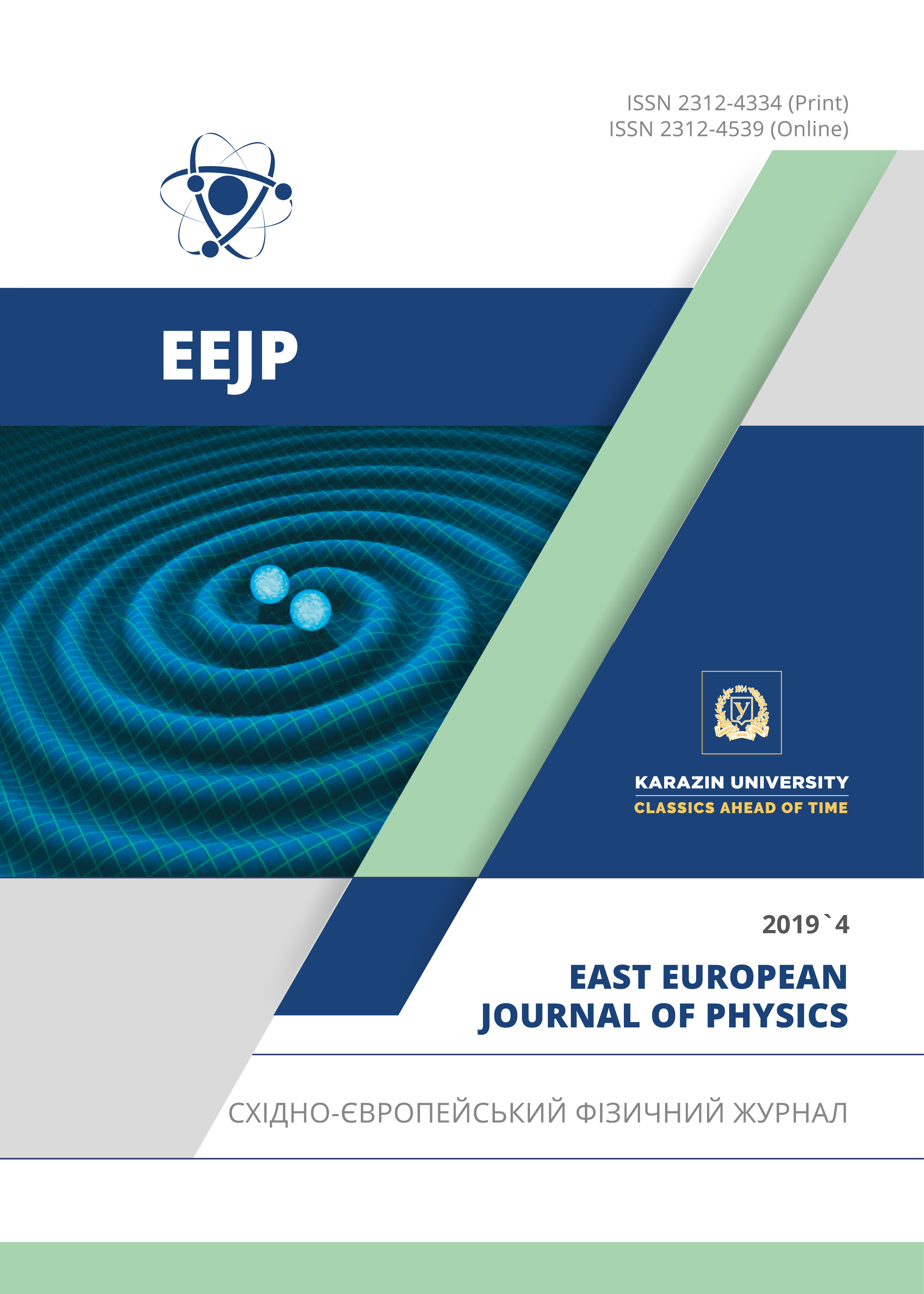Digital Triggering Device and Generator of Starting Pulses for Ignition of Spark Gaps of REB Accelerator “TEMP”
Abstract
To ensure the controllability and high noise immunity while measuring the characteristics of the accelerators of relativistic electron beams (REB) “TEMP”, and parameters of the processes in them, triggering devices with galvanic isolation of input and output circuits, allowing to set up the pulse delays in the range from 1 μs to tens of milliseconds, have been developed. When they are used, the effect of loop currents, which flow in the common ground circuits and affect the operation of the measuring equipment, is eliminated. To synchronize the operation of the REB accelerator “TEMP” a triggering device was developed and assembled. It was assembled from blocks produced on the up-to-date elemental base and is a complete functional product. The triggering device comprises a trigger block and delay units. The trigger block is developed on the basis of an AND - NOT chip and a multivibrator. The delay units are built on single-shot vibrators K155AG1 and differ in the value of adjustable delays, which are determined by the external elements R and C, connected to the multivibrator. Unfortunately, in case the millisecond delays are set up, the pulse drop on the multivibrator is not stable. Therefore, a digital triggering device was developed. The digital triggering device is built on the basis of digital microcircuits and consists of the following blocks: binary-decimal counters, decoders, and one oscillator with quartz frequency stabilization, which is common to all four channels. It contains four identical channels with delay adjustment from one microsecond to one hundred milliseconds. Such a pattern of the circuit allows, if necessary, adding channels for starting other units. Pulse signals of the triggering device are fed to the ignitor unit of the spark-gaps. A pulse generator for igniting the spark-gaps of the REB accelerator “TEMP” has been developed. A generator, designed to control the spark gaps ignition in the High Voltage Pulse Generator (HVPG) and spark gaps ignition in the magnetic systems, which are used in switching systems of the capacitor banks with the energy of 60 ¸ 150 kJ, has been described. The generator provides voltage pulses with the amplitude of up to 20 kV, at the current in the short circuit mode of 5 A, the pulse duration of the first half wave of 12 μs, and the pulse repetition frequency (PRF) of not more than 10 Hz.
Downloads
References
V.V. Zhiznevsky, А.А. Turchin and А.А. Turchin, Problems of Atomic Science and Technology, 4, 376-380 (2010), in: https://vant.kipt.kharkov.ua. (in Russian)
V.L. Shilo, Популярные цифровые микросхемы [Popular digital microchip], (Радио и связь, Moscow, 1987). (in Russian)
A.B. Batrakov, E.G. Glushko, А.А. Zinchenko, Yu.F. Lonin, А.G. Ponomaryov, S.I. Fedotov, Problems of Atomic Science and Technology. Series: Plasma electronics and new methods of acceleration, 4, 7-9 (2013), in: https://vant.kipt.kharkov.ua. (in Russian)
E.G. Krastelyov, Instruments and experimental equipment, 6, 51-56 (2014);
D.V. Vinnikov, K.V. Korytchenko, V.I. Tkachev, V.V. Egorenkov, D.V. Kudin and T.Yu. Mirnaya, Electrical Engineering & Electromechanics, 1, 39-46 (2017), https://doi.org/10.20998/2074-272X.2017.1.07.
Authors who publish with this journal agree to the following terms:
- Authors retain copyright and grant the journal right of first publication with the work simultaneously licensed under a Creative Commons Attribution License that allows others to share the work with an acknowledgment of the work's authorship and initial publication in this journal.
- Authors are able to enter into separate, additional contractual arrangements for the non-exclusive distribution of the journal's published version of the work (e.g., post it to an institutional repository or publish it in a book), with an acknowledgment of its initial publication in this journal.
- Authors are permitted and encouraged to post their work online (e.g., in institutional repositories or on their website) prior to and during the submission process, as it can lead to productive exchanges, as well as earlier and greater citation of published work (See The Effect of Open Access).








